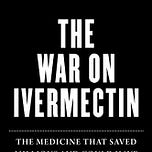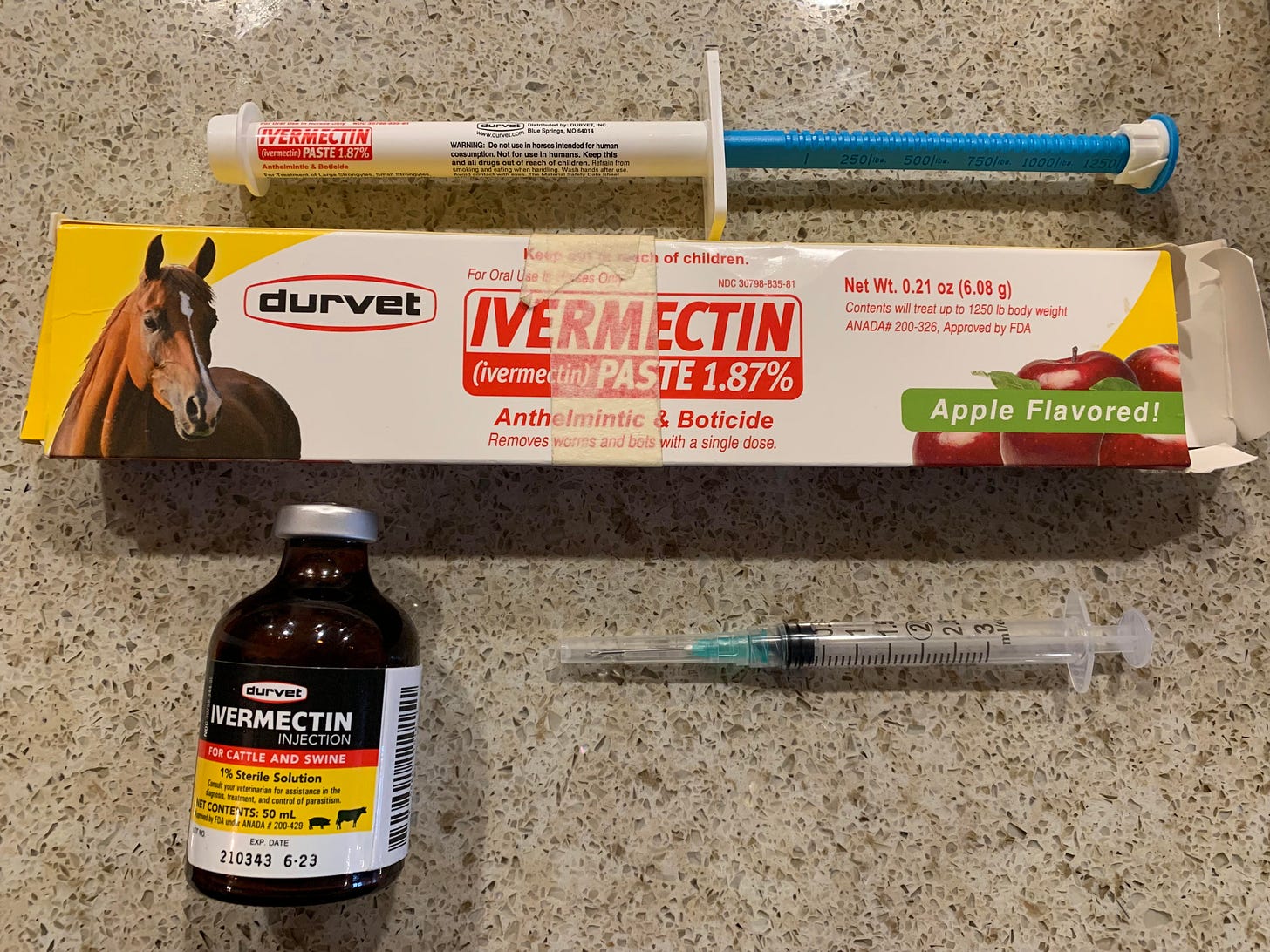*Apologies to my close friend RM. What annoys me most about you is you always were a better climber than I was.
This interview, from Paul Thomas' With the Wind podcast, showcases two courageous medical freedom movement physicians. They put their patients first and paid a high price. I recorded this at 1.5 speed to help you develop rapid listening skills. If you want to listen at regular speed, HERE is the original interview.
In case you missed it, HERE is my recent interview with Dr. Paul. You can listen to more of his interviews and his trademark optimism at Children's Health Defense. Or, search your podcast app for With the Wind.
Dr. Kory was a top academic intensive care unit (ICU) geek at the pinnacle of his skills and specialty. When COVID and the attendant lies were spread through the world, he collaborated with an international team of like-minded doctors to innovate successful treatments that flew in the face of fraudulent drugs and protocols. When his institution resisted and defamed him, he quit his prestigious job and volunteered at a training hospital in New York. They initially allowed him to continue his research and treat his patients properly. His innovations included the use of steroids and blood thinners.
He and his partner Paul Marik, MD, (the most published ICU doctor who is still in practice) founded the Front Line Critical Care COVID-19 Alliance (FLCCC). They now have an outpatient practice and see patients virtually. They use the skills they developed over the past several years to treat syndromes such as vaccine damage, which is often falsely called the "COVID long hauler's" syndrome. A friend has a problem like this after a blood transfusion, presumably due to spike protein transfer. Kory has treated her, and she loves him. See DrPierreKory.com.
Dr. Kory wrote a book about ivermectin (Amazon link HERE) that should be available soon.
He says this drug is the most effective COVID and vax damage treatment. It is non-toxic and is used together with nutraceuticals such as zinc and vitamin D. Although traditional pharmacies suppress ivermectin, Dr. Kory prescribes it using US compounders. I explained what compounding pharmacies do in Hormone Secrets and included that chapter as a bonus section at the end of this post.
Here is an open secret that Kory alluded to but sidestepped: veterinary ivermectin is widely used for people because the pharmacies and the regulators have made the human version expensive and unavailable. You can buy the vet version over the counter from any feed store, and your local Tractor Supply is just around the corner. Ivermectin is available as either a paste or an injectable. Both can be taken orally and need to be measured carefully. HERE is a video about figuring out the exact dose of paste. The horses I've spoken to say they like its apple flavor.
The injectable form has to be extracted from the vial with a syringe and then squirted into the animal's mouth. The mammals I've interviewed say it tastes terrible. I apologize for these bad jokes--they are not funny, but neither is standard medical care. Who would have predicted our companies and governments would have gone rogue and start slaughtering us? Who would have dreamed we would ever be taking medications originally earmarked for animals?
Mail ordering drugs from abroad for your use under a local physician's supervision is legal, but there are never guarantees. For doses, references, and how to buy medications economically from India, download Cassandra's Memo HERE. A podcast about it is HERE, and the paperback is available on Barnes and Noble HERE.)
The following is an Indian pharmacy that sells ivermectin and many other drugs. I have heard good things about them.
Sunrise Enterprise
export@sunriseindia.org
A-206, 2nd Floor, Sumel Business Park-6
Dudheshwar Road
Opposite Hanumanpura BRTS, Shaibaug
Ahmedabad, State-Gujarat (India)
Whatsapp - +919099096658
Generic drug quality is uneven.
See Katherine Eban's Bottle of Lies or my chapter about generics from Butchered by "Healthcare" for more. You can download it HERE. This is my introduction:
The history of the twentieth century was dominated by the struggle against totalitarian systems of state power. The twenty-first will no doubt be marked by a struggle to curtail excessive corporate power.
—Eric Schlosser in Fast Food Nation
We have allowed our patent drugmakers to gouge us so thoroughly that we can no longer afford their products. The result is that ninety percent of America’s medications are now generics. Until recently, I believed that these were practically equivalent to the brand names, but it stunned me to learn I was wrong.
Generics are not exact copies of trade-name drugs. The manufacturers do not have the original recipe, and production outside the brand factories tends to be less careful. Overseas, there might be hygiene problems or extra ingredients added. These can change the way a drug works or even be harmful.
We permit new companies to manufacture drugs after the patent expires. Other companies make generics in foreign countries where patent laws are ignored. The drug’s chemical name is used to market generics rather than the original trade name, and sometimes the generic drugmaker makes up their own trade name.
Lipitor generics illustrate how it works. Richard Mason (Harvard), collected thirty-six samples of this statin drug from fifteen countries and two dozen manufacturers between 2011 to 2013. Analysis proved that thirty-three had impurities that thoroughly compromised them. This is beyond atrocious, but the backstory is worse.
When the patented version of Lipitor was originally studied during its approval process, only two small groups lived longer: those who had a previous heart attack and (possibly) those with hereditary high cholesterol. This alleged success was used to support marketing to nearly anyone with slightly high cholesterol. There are now 35 million US citizens taking Lipitor. It is not just the bestselling statin, but in 2011, it was the bestselling medication of all time.
Lipitor was an ideal drug for fraudulent generic copies because the genuine item was nearly worthless. Neither the doctors, the public, the study authors, nor the writers of the two otherwise excellent resource books I used for this chapter ever understood the irony.
Kory, Marik, and Paul Thomas are all younger than I am, yet they are still my vision of what medical academics were during my youth—brilliant and remorselessly dedicated to their patients. My old mentors have passed, and I am sure I was blind to their flaws, but there is something to what I say. I am left wondering about the state of American leadership when an ordinary person like me finds himself on the front line during his retirement.
My other reaction, as I listen to endless nonsense about “science,” is: who cares about all that? We have millions dead from the triple strike of the manufactured virus, the withheld therapies, and the death vax. We face a whodunit murder/genocide criminal case, not a debate about “science mistakes” or “how could doctors go so wrong.”
Bonus section: This is the chapter about compounding pharmacies from Hormone Secrets (2021). You can download this book HERE, and it is my gift to you if your resources are tight.
GENERICS: GOOD, BAD, OR FAKE?
Big Pharma and their financially captive FDA are trying to squeeze the compounders out of business. If they succeed, hormone treatments will be less versatile and effective.
Compounders were the first pharmacists, and they have a venerable tradition spanning millennia. For example, compounding pharmacies developed a drug to treat malaria made from tree bark. In 1877, Dr. Squib, a compounding pharmacist, created standards for US medications and later started his eponymous company. Other drugmakers founded Merck, Sandoz, Upjohn, and Eli Lilly. These companies made drugs for individual patients, but later developed into massive operations churning out manufactured medications. As late as the 1960s, most drugs were still being compounded, but this practice has declined to less than five percent today.
The pharmaceutical companies obtain new medicines either by inventing them or buying them from competitors or government-funded developers. The drugmakers are also allowed to patent certain bio-identicals based on proprietary delivery systems such as transdermal patches. Strangely, they have also been permitted to patent and assume control of specific doses and combinations of human hormones. There is nothing special about these except the branding and the marketing—compounders can easily manufacture them. Examples include certain estradiol-progesterone combinations and the Prometrium natural brand of progesterone patented for 100 and 200 mg. AndroGel is a branded bio-identical testosterone gel for men, patented at 1 and 1.62 percent.
When a doctor writes a prescription for a compounding pharmacy, under the current rules she must claim her patients need something unique that is not supplied by the big drugmakers. These include drug combinations or doses that are at least 20 percent higher or lower than the ones the industry has available. Examples of compounded drugs include:
✪ 300 mg progesterone capsules. The patented ones are 100 and 200 mg.
✪ Testosterone creams of 10 and 20 percent, much higher than AndroGel.
✪ The weak bio-identical estrogens, estrone, and estriol are sometimes combined with estradiol. This is an excuse to compound—the mix works no better than estradiol alone.
If a patented drug is available, reasonably priced, and appropriate, it would be the top choice. But this never happens because brand names are outrageously expensive. Sometimes, however, economical patented drugs under a different name but made by the same companies can be found abroad. Patients can either travel there or buy from websites.
Big Pharma has gouged US consumers so thoroughly that 90 percent of the medications purchased here are generic. These are often adequate, but consumers may receive a different product each time they reorder. The reason? Wholesale pharmacies are always searching the international markets for the lowest-priced product to dump on retailers. No one notices the switch until the patient takes the drug. Many people who have found stability using one generic have problems with a new one. Side effects may appear, the potency may be different, or the drug may even be ineffective. I have seen this with Norvasc, Synthroid, and Toprol XL generics.
Compounders’ medications are usually of excellent quality and reasonably priced. Their system makes individualizing doses and formulations convenient. They are currently the best choice for most bio-identical hormones.
One downside of compounding is that the law requires short expiration dates for these drugs. This makes compounded drugs less competitive than patented ones because if patients do not use their prescription right away, they have to buy them again. The huge companies may have influenced the development of this regulation to harass their tiny competitors. But the compounders benefit from repeat purchases as well. There is no practical reason for these rules—a pharmacist confided to me they make their medications from materials that have at least a two-year shelf-life.
Note: Individual state’s pharmacy boards, not the FDA, supervise the compounders, and the Pharmacy Compounding Accreditation Board (PCAB) certifies them. If your druggist isn’t on these lists, they may have quality issues.
Big Pharma, abetted by their captive physician groups and the FDA, is trying to run US compounders out of business—three Goliaths against a David. An article in Menopause (2016) describes the conspiracy:
The Endocrine Society, The North American Menopause Society, American Congress of Obstetricians and Gynecologists, American Society for Reproductive Medicine, and International Menopause Society recommend against CBHT [compounded bio-identical hormone therapy] use by anyone without a medical condition preventing them from using FDA-approved HT [hormone therapy]. The FDA has issued a caution against compounded drug use. Their concerns include inadequate evidence of efficacy and safety, variable purity and potency, and insufficient labeling.
The paper sounds authoritative and has 87 references. But these physician organizations are deep inside industry’s pockets. Each author of this statement gets money from more than 5 mega-companies. They also used “medical writing support,” which may mean that corporate ghostwriters wrote the whole thing. These are conflicts of interest, the politically correct way to describe money changing hands.
Drugmakers have repeatedly lied to us and they have committed more felonies than any industry in history, as judged by their criminal settlements. They have their own Wikipedia page of shame about it. We hold out their patent drugs as paragons, but they are not. My other book describes many related issues. For example, the following products had to be recalled:
✪ Bayer's Cutter Laboratories’ blood products with HIV in them. Instead of destroying the inventory, they sold it to Asian and Latin American markets without heat treating it to reduce the risk. Many hemophiliacs who received it tested newly positive for HIV and some developed AIDS.
✪ Many patent medications including Ketorolac contaminated with particulate matter, rubbing alcohol contaminated with the toxic alcohol methanol, and drugs containing a carcinogen called nitrosamine.
✪ Birth control pills with labeling mistakes that could have resulted in pregnancy.
✪ Several drugs with toxic preservatives that were not listed on the label.
Industry’s latest salvo in the war on compounders is the 2020 publication of The Clinical Utility of Compounded Bio-identical Hormone Therapy: A Review of Safety, Effectiveness, and Use. This is an aggressive attack on a system that has provided us with safe drugs for more than a century. The authors recommend massive federal regulation, including using the FDA to oversee compounders. They also propose categorizing most currently compounded medications as “difficult to compound,” which would virtually eliminate them. If these suggestions are implemented, it would be the end of doctors’ autonomy to provide specified, quality drugs for individual patients. Luckily, these proposals have generated pushback from 32 members of Congress, who signed a letter opposing them.
The FDA paid the National Academy of Sciences to write this review. Since more than half the Agency’s budget comes from Pharma, the National Academy—a supposedly neutral organization—has allowed itself to become a stalking horse for drug corporations. Each of these players understands the true golden rule—those with the gold make the rules.
If you want to help, see the Alliance for Pharmacy Compounding (a4pc.org) and savemycompounds.com. The National Community Pharmacists Association (NCPA) (https://ncpa.org/) is another firm supporter of compounding. A third organization to contact is the American Pharmacists Association (APhA) (https://pharmacist.com/).












